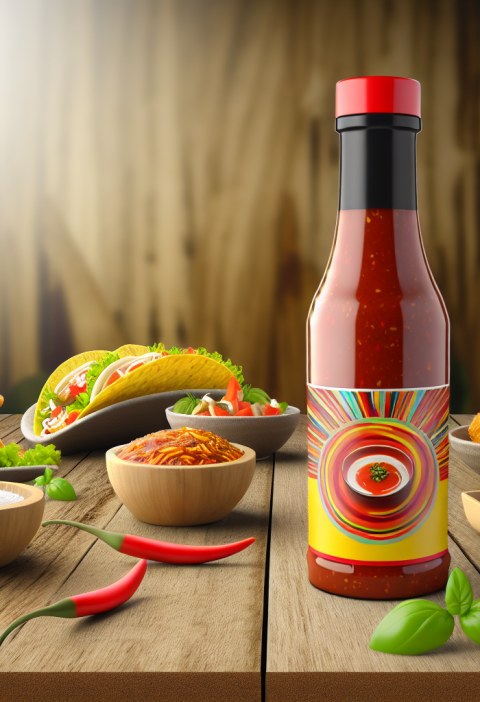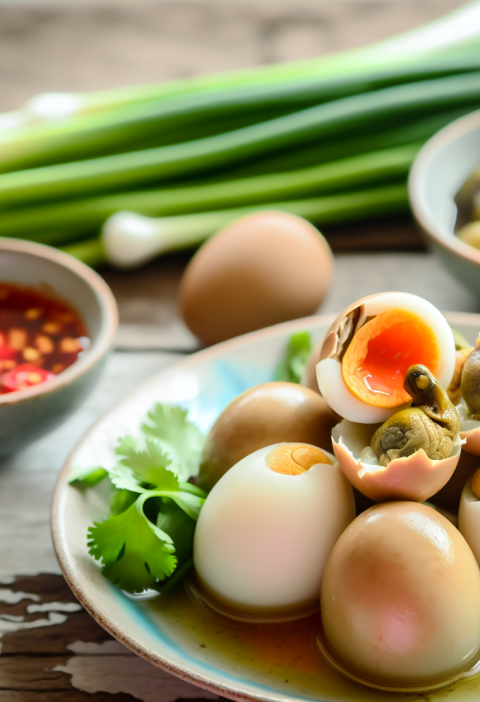“`html
An Irresistible Journey: Mastering Soy Sauce and Dark Soy Sauce at Home
Imagine an aromatic blend enveloping your senses, with each drop a symphony of umami and depth. Prepare to unravel the secrets behind crafting both soy sauce and dark soy sauce in your kitchen. From my experience, these artisanal concoctions transform dishes into culinary masterpieces. Your taste buds will be serenading you, and you’ll never look at store-bought soy sauce the same way again.
Preparation Time:
- Preparation: 30 minutes
- Fermentation: 2 weeks to 6 months (depending on your chosen method)
Suitable for: 10 servings
Difficulty: Medium
Ingredients
The necessary ingredients (possible in all kinds of variations).
- 2 cups of organic soybeans
- 10 cups of water (filtered)
- 1 cup of wheat flour
- 1 cup of sea salt
- 1 cup of roasted barley (optional for added depth)
- 2 tbsp koji starter (Aspergillus mold)
- Brown sugar or molasses (for dark soy sauce, around 1-2 tbsp)
Alternative Ingredients:
For a gluten-free version: Substitute wheat flour with a mix of rice flour and gluten-free barley.
For a richer flavor: Add a few pieces of dried shiitake mushrooms during fermentation.
For a vegan twist: No changes needed, as the recipe is naturally vegan!
Steps
The steps of preparation (possible in all kinds of variations).
- Soak the soybeans in water overnight.
- Drain and rinse the soybeans.
- Boil the soybeans until tender (approximately 1-2 hours).
- Mash the soybeans until smooth.
- Mix mashed soybeans with wheat flour and barley (if using).
- Steam the mixture for 30 minutes.
- Cool the mixture to room temperature.
- Add koji starter and mix well.
- Spread the mixture thinly on trays and allow to ferment at 25-30°C (77-86°F) for 2-3 days, stirring daily.
- Once molded, dissolve the sea salt in 10 cups of water to create a brine.
- Add the fermented soybean mixture to the brine.
- Transfer to a sterilized container or jar and cover loosely.
- Ferment for at least 2 weeks, occasionally stirring (for a more intense flavor, ferment up to 6 months).
- Filter the mixture through a clean cloth to separate the liquid from the solids.
- Bottle the liquid which is now your homemade soy sauce.
- For dark soy sauce, heat the soy sauce gently, add brown sugar or molasses, and simmer until dissolved.
Adjust the flavor if necessary, adding more salt or sugar to taste.
Nutritional Benefits
- Rich in essential amino acids for muscle growth and repair.
- Contains antioxidants which help combat free radicals.
- Provides a good source of protein, particularly beneficial for vegans and vegetarians.
- Fermented based product, promoting gut health and aiding digestion.
- Low in calories yet packed with flavor.
Each ingredient and step has been meticulously chosen and crafted to ensure the maximum health benefits while retaining that irresistible taste.
Possible Additions or Upgrades
- Infuse with garlic or onion for added depth.
- Add a splash of mirin or rice vinegar for a sweeter, tangier twist.
- Incorporate smoked paprika or chipotle for a smoky flavor.
- Use mushroom extract to boost the umami level.
- Incorporate ginger slices for a spicy kick.
These additions will not only diversify the flavor profile but also offer new culinary adventures every time you use your homemade soy sauce.
Q&A
How long should I ferment the soy sauce for the best flavor?
Fermentation can last from 2 weeks to 6 months. For a more complex and intense flavor, go for the longer period.
Can I use a different type of salt?
Sea salt is recommended, but kosher salt or any non-iodized salt would work effectively.
Is it necessary to use koji starter?
Yes, the koji starter is crucial for the fermentation process, which develops the unique flavors of soy sauce.
Can I speed up the fermentation process?
While traditional fermentation takes time, using a warm environment of around 30°C (86°F) can slightly speed up the process.
How do I store homemade soy sauce?
Store in a clean, air-tight bottle or jar in a cool dark place. It can last up to a year or more.
Can I reuse the solids left after filtering the soy sauce?
Yes, they can be dried and used as a seasoning or added to soups for extra umami.
What if I notice mold during fermentation?
A white mold is usually harmless and part of the process. However, discard if you see any colorful mold like green or black.
Can I use other beans instead of soybeans?
Traditionally, soybeans are used. However, experimenting with black beans or chickpeas may yield interesting results.
What is the difference between regular soy sauce and dark soy sauce?
Dark soy sauce is thicker, sweeter, and darker, often used for coloring dishes, while regular soy sauce is lighter and saltier.
Is homemade soy sauce healthier than store-bought?
Homemade soy sauce can be healthier as you control the ingredients, ensuring no preservatives or artificial additives.
From my kitchen to yours, this journey of mastering soy and dark soy sauce can bring an artisanal touch to your meals. Share this recipe with friends and family on social media, and let the culinary magic spread!
“`







